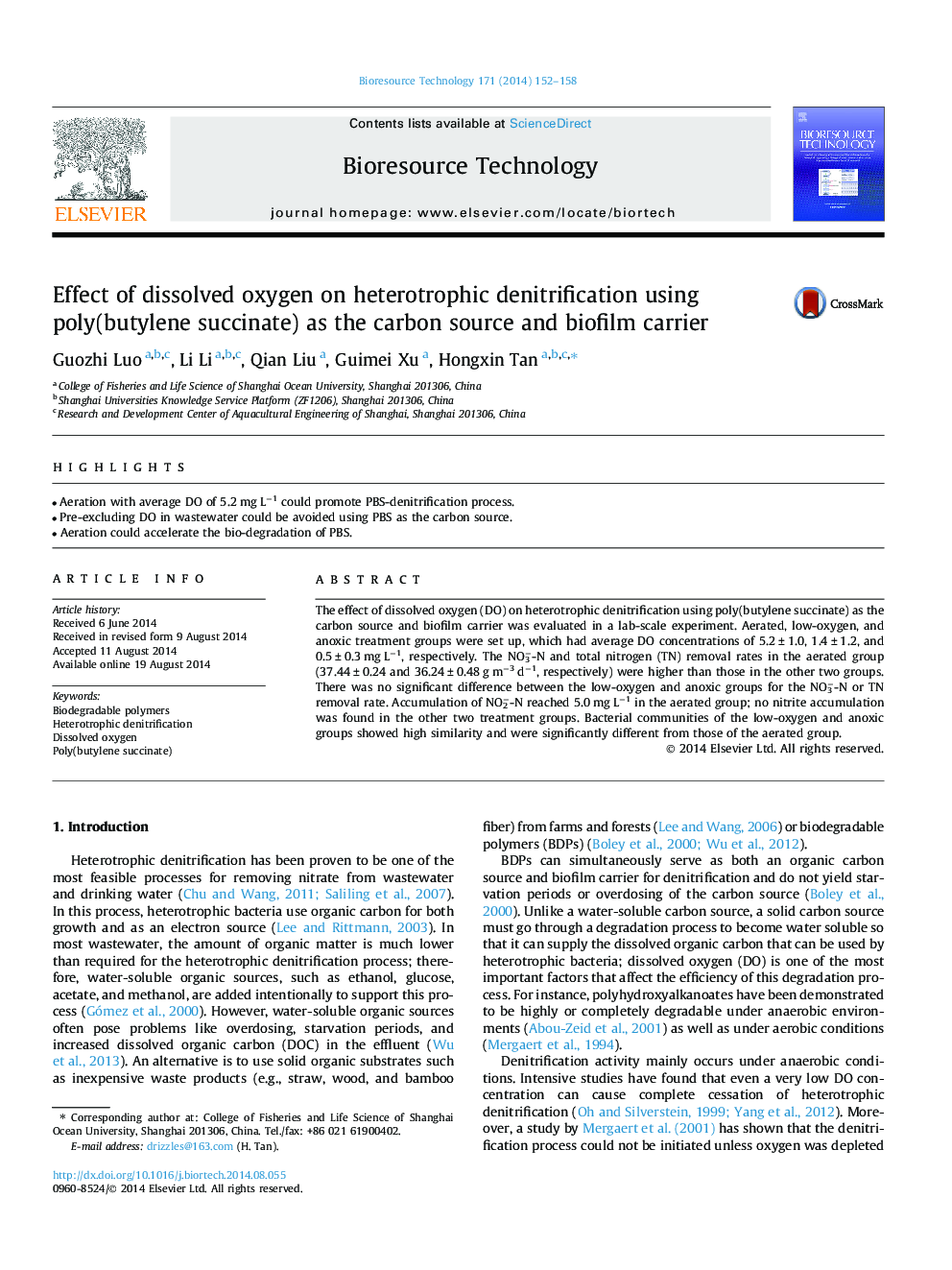| Article ID | Journal | Published Year | Pages | File Type |
|---|---|---|---|---|
| 680352 | Bioresource Technology | 2014 | 7 Pages |
•Aeration with average DO of 5.2 mg L−1 could promote PBS-denitrification process.•Pre-excluding DO in wastewater could be avoided using PBS as the carbon source.•Aeration could accelerate the bio-degradation of PBS.
The effect of dissolved oxygen (DO) on heterotrophic denitrification using poly(butylene succinate) as the carbon source and biofilm carrier was evaluated in a lab-scale experiment. Aerated, low-oxygen, and anoxic treatment groups were set up, which had average DO concentrations of 5.2 ± 1.0, 1.4 ± 1.2, and 0.5 ± 0.3 mg L−1, respectively. The NO3−-N and total nitrogen (TN) removal rates in the aerated group (37.44 ± 0.24 and 36.24 ± 0.48 g m−3 d−1, respectively) were higher than those in the other two groups. There was no significant difference between the low-oxygen and anoxic groups for the NO3−-N or TN removal rate. Accumulation of NO2−-N reached 5.0 mg L−1 in the aerated group; no nitrite accumulation was found in the other two treatment groups. Bacterial communities of the low-oxygen and anoxic groups showed high similarity and were significantly different from those of the aerated group.
